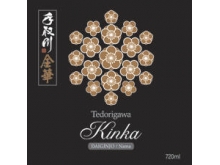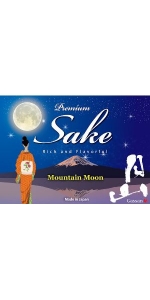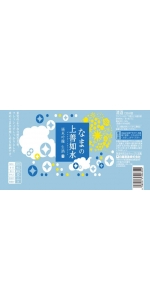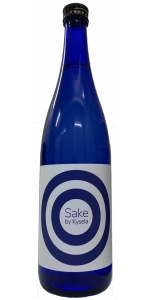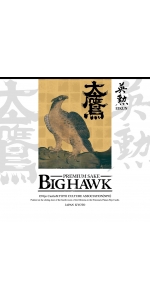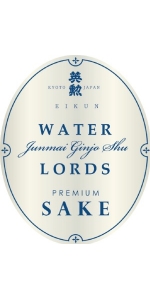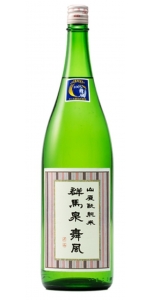Sake Tedorigawa Kinka Gold Blossom (720ml)
| Country: | Japan |
| Region: | Ishikawa Prefecture |
| Winery: | Yoshida Brewing Company |
| Grape Type: | Yamada Nishiki (Sake) |
| Vintage: | NV |
| Bottle Size: | 720 ml |
Woodsy honeycomb, nutshell, and mushroom patch aromas with a satiny fruity-yet-dry medium-to-full body and a delicate savory mushroom stock, chestnut, and golden beet driven finish. A fine choice for tempura. 91 Points -Beverage Tasting Institute
RATING: 91 points (Exceptional)
CATEGORY: Junmai Ginjo Sake, Sake
ALCOHOL BY VOLUME: 15.4%
TASTING LOCATION: In Our Chicago Tasting Room
TASTING DATE: Dec-05-2012
WINE ID: 200767
This unpasteurized sake is exciting and lively with a nose full of citrus, apple blossom and shizo. The palate is equally as bold featuring fresh persimmons, marshmallow and slightly underipe stone fruit. The finish is clean showing soft minerality.
POLISHING RATIO: 60%
ALCOHOL: 15.5
SMV +/-: +5.0
ACIDITY: 1.6
RICE KOJI: GOHYAKUMANGOKU
RICE KAKE: KOSHI IBUKI
YEAST STRAIN: K1801
FOOD PAIRINGS: Sushi Nigiri with fatty fish, oysters, omelettes, Lighter Italian, Chinese or French dishes
CHEESE PAIRINGS: Mildly ripe Coulommiers or Brie, Italian Raschera
Sake By Kysela has been a project in the making for three years now. In the end, we selected a Sake made from the famous Yamada Nishiki rice produced in the Southern Prefecture of Shimane. Flavorful, rich, and clean; this sake is best as an aperitif or with seafood like fluke, dover sole or halibut. Kanpai!!!
Rice milling: 60%
Rice varietal: Iwai (Only available in Kyoto)
Alcohol: 15%
Sake meter value: +3.0
Acidity: 1.3
Tasting Notes: --------
Eikun sake uses water from a source called "Fusui", rated as one of the top 100 sources of water in Japan. This water source is located just south of the ancient Japanese, and still cultural capital of Japan, Kyoto.
Review:
"Clear with a platinum blue cast. Aromas of coconut milk, melon, pear and rice pudding with a with a supple, dry-yet-fruity medium body and a vanilla, apple, and pepper accented finish. A robust and lively sake that will sing with spicy Asian cuisine."
- Beverage Testing Institute (July 2nd 2014), 91 pts
Sake Eikun Junmai Ginjo Water Lords is made with Iwai rice.
Eikun sake uses water from a source called "Fusui", rated as one of the top 100 sources of water in Japan. This water source is located just south of the ancient Japanese, and still cultural capital of Japan, Kyoto.
Aromas of macadamia oatmeal cookie, spicy zucchini bread, and vanilla cream with a satiny fruity-yet-dry medium-to-full body and a layered, banana custard, jicama, salted whole nut, apple, and radish nuanced finish. A Wonderfully vibrant and flavorful sake.-Beverage Tasting Institute 94 points (Exceptional)
RATING: 94 points (Exceptional)
CATEGORY: Junmai Ginjo Sake, Sake
ALCOHOL BY VOLUME: 15.3%
TASTING LOCATION: In Our Chicago Tasting Room
TASTING DATE: Dec-05-2012
WINE ID: 200768
Savory nuances of toasted quinoa, banana bread, and nutmeg are present in the nose. On the palate, this sake is layered, lifted and complex, with flavors of plantain, dried cranberry, nougat, white Mushroom and almond.
POLISHING RATIO: 60%
ALCOHOL: 15-16%
SMV +/-: +3.0
RICE KAKE: 50% WAKAMIZU 50% LOCALLY FARMED JAPANESE RICE
YEAST STRAIN: PROPRIETARY
Rice Variety Yamadanishiki
Rice Polishing Ratio 45%
Yeast House Yeast (Kanazawa Lineage)
Alcohol Content 15.8%
Acidity 1.3
Sake Meter Value +6.0
Sake Tedorigawa Kinka Gold Blossom (720ml) is Full, clean taste, with a nice balance of sweetness and acidity overlaying a delicate fruitiness. Like plum blossoms at winter’s end, “Kinka” is vivid and poised, in the elegant Kanazawa style.
Tedorigawa “Kinka” is the perfect companion for a session at the sushi bar. Its assured mouthfeel provides a perfect foil for the delicate flavors of fresh sashimi, while staunchly supporting nigiri choices like anago, mirugai and uni.
The Award Winning Sake Brewery
Gassan, also known as Yoshida Sake Brewing Co., Ltd., is located in the small village of Yasugi. Yasugi is in the very Southernmost Japanese Prefecture of Shimane. The Kura or brewery was founded in 1743 and present owner Tomonori Yoshida-san's family took over the property in 1826; hence Yoshida-san is the 5th generation of family involvement and ownership with the Kura.
Over 200 years ago around Yasugi, the Amago-clan was reigning over the Sanin district. There, the clan established a castle where the feudal lord of Amago resided in the Age of Civil Wars. "GASSAN", took its premium sake brand name from the mountain in this area. Their time-honored tradition of sake brewing was established by special permission from the feudal lord of the House of Hirose. They have proudly maintained this tradition, handing down brewing secrets from generation to generation for over 180 years.
Their sake has received the gold award over ten times at the "Zenkoku Shinsyu Kanpyou Kai" (National New-Brewed Sake Contest), the foremost and authoritative contest in the Sake industry.
Gassan produces Tobin Sake or competition sakes from 18-liter tobins. The Tobin sake is very limited in production, but is marketed.
About their Fine Sake
Production is small at 700 Koku (or 14,000 9-liter cases in wine terms). Seven sake types are produced here by the ageless Master Toji, Tanaka-san, who is 84 years young. At artisanal breweries like Gassan water is all important and sure enough all of the water is sourced from mountain springs around Yasugi.
Typical of Western Style Sakes, their Nihon-Shu is big boned, rich and round, and balanced with lactic acid.
Why they got so many awards?
To make quality sake, it really depends on (1) Water, (2) Sake Rice, (3) Toji's Skill.
1. The Water Source:
Their sake is brewed with fine and super soft water, which the lord of the House of Hirose used in their tea ceremonies at the end of Edo period. (late 1800s)
The water Gassan uses for their sake is recognized as one of the best 100 waters in Japan. It was also known as one of the highest quality water in the "Fumai-style tea ceremony". Furthermore, as water varies according to climate conditions, we specially blend in other water sources to precisely control water hardness to maintain our exacting brewing requirements.
2. The Sake Rice:
Gassan does not hesitate to use high quality rice even though it may cost them. They focus on making outstanding sake for sake lovers. The sake mai or rice types used are:
- Yamada Nishiki
- Gohyakumangoku
- Sakanishiki
- Kairyoomachi
- Kannumai
3. The Master Toji's skills are superior to others:
The Master Toji Tanaka-san, is certified as "Modern master craftsman" by Ministry of Health, Labor and Welfare. The highly skilled people (a wide variety of things such as an entertainment, food, Metalwork, machine appliance assembling, repair, the sewing of clothes, carpenter) can be certified as "modern master craftsman " that Japanese government wants Masters to pass the technique to the younger generation.
Tanaka-san is also passing all of his skills to younger toji, Adachi-san. The uniqueness of Gassan is the mixture of Classic and Modern Toji skills that effect the flavor in the end.
This is the certificate of "Seishu Senmon Hyoukasha" (Sake Expert Assessor) that Tomonori Yoshida-san holds. There are about only 50 people who are certified. Out of all the 50, Yoshida-san is the Second person of the beginning. This certificate is presented by Alcoholic beverage research institute, the best liquor research organization in Japan. Whoever certified as Sake Expert Assessor, they can be called top taster, just like Master Sommelier in Wine world. Because the exams are so difficult, there are still only about 50 people certified.
Currently, there are about 1300 Kura exist in Japan, but most Kurabito (brewery people) do not hold such certificate. You need not only knowledge of sake, but also tasting skills to be certified. The producer, Yoshida-san is giving a 100% effort to create high quality sake.
Above all results, Gassan's sake is world-class sake
Gassan's sake is very easy and smooth to drink. Their constant pursuit of perfection has led to success at a national level. Now this high quality sake is available in the US.
- back
Rombauer Vineyards Proprietor Selection Chardonnay is made from 100 percent Chardonnay.
Proprietor Selection is a reserve Chardonnay produced only in exceptional vintages by blending the best barrels from the finest lots. The 2022 represents the 16th vintage in 44 years. Like all of our Chardonnays, this wine comes from Carneros where the cool climate and clay soils offer ideal growing conditions for the varietal.
This wine comes from elite vineyards in the Carneros region owned by the Rombauer family and select growers including the Sangiacomo family, long-term grower partners who have farmed this land for three generations
Expressive and concentrated aromas of grapefruit and lime sorbet with hints of clove are present in the glass. It is rich and intense on the palate with sweet peach, clove, and freshly baked pastry flavors. There is a bright refreshing acidity that gives way to more stone fruit flavors that continue to build on the very long and concentrated finish.
100% apple wine. A blend of Golden Delicious and Fuji apples hand-picked in the Shenandoah Valley; aromas and flavors of freshly harvested apples, blossoms and spices. (semisweet)

